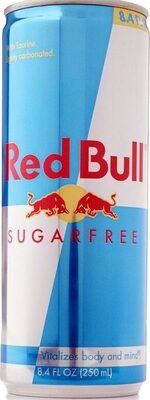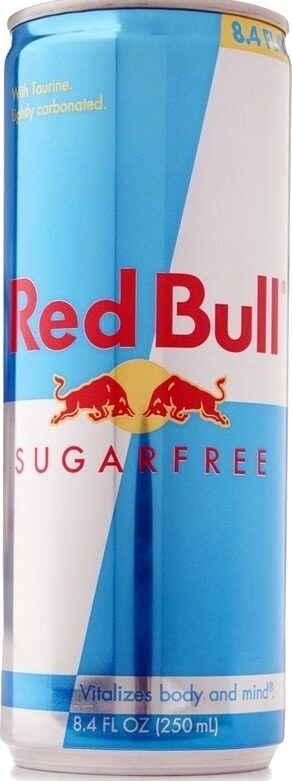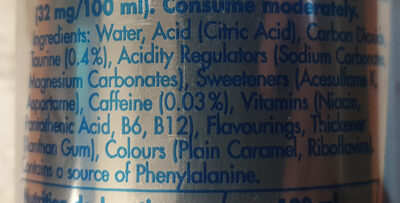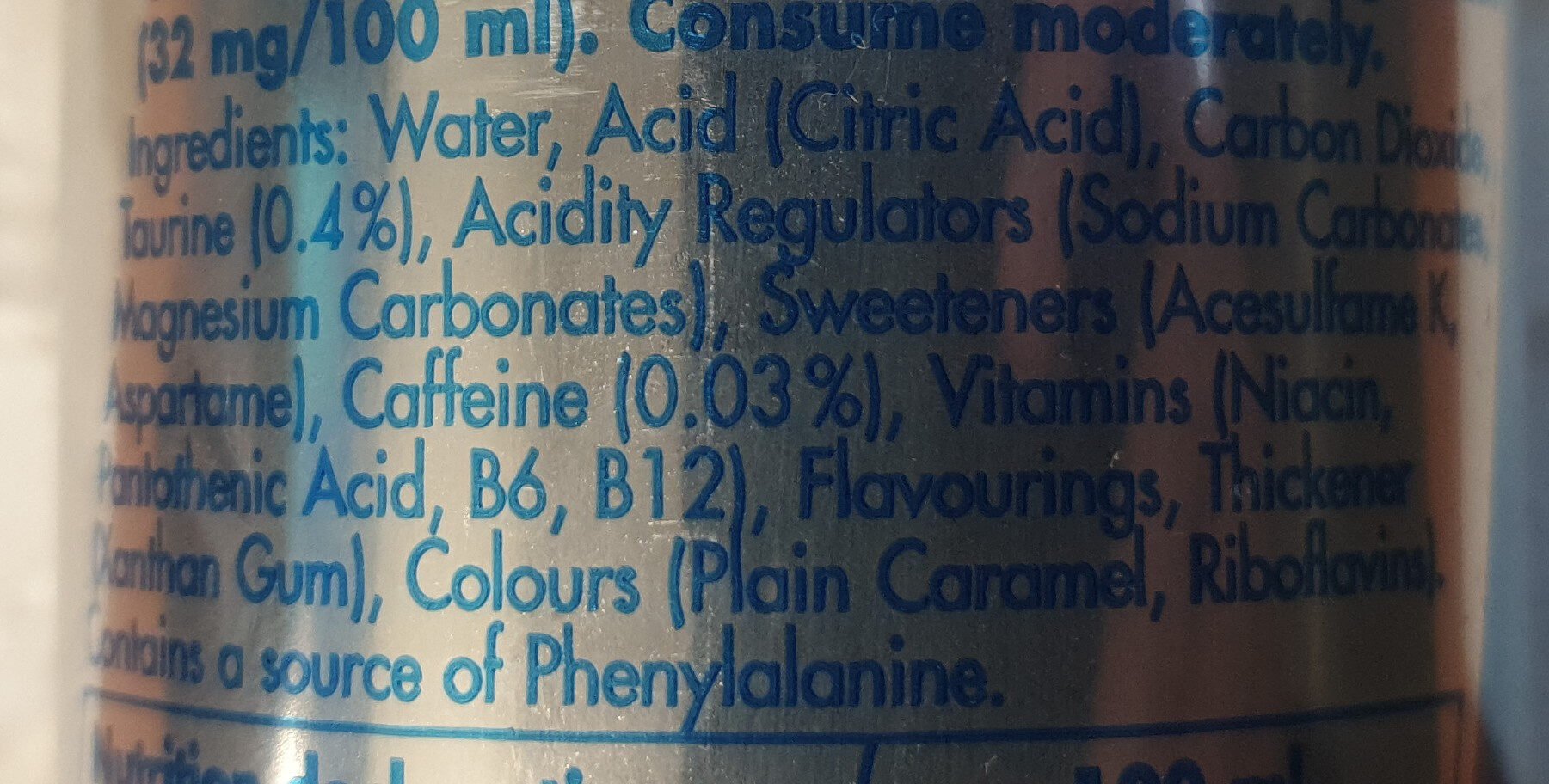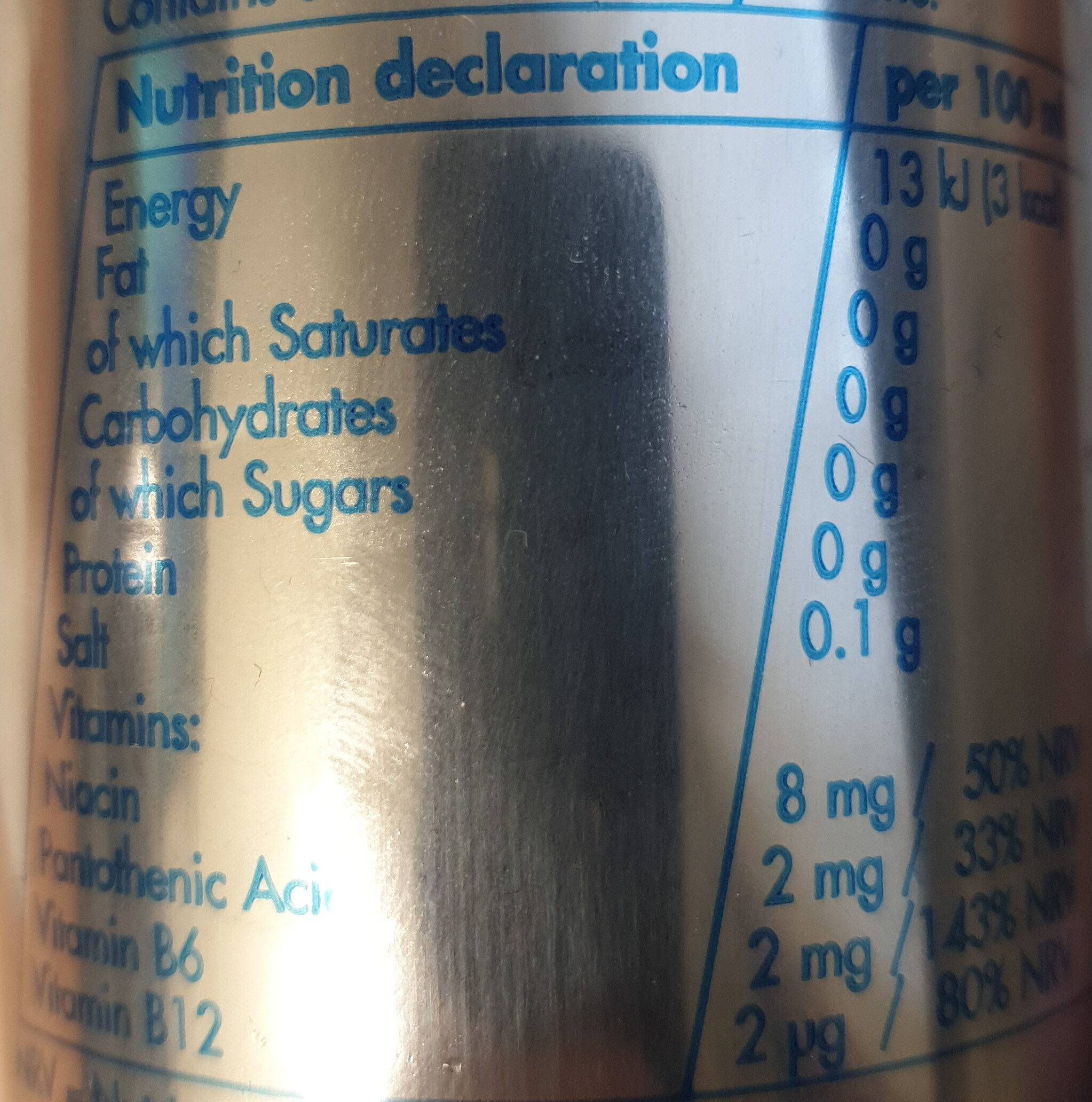Red Bull Sugar Free 250ml
This product page is not complete. You can help to complete it by editing it and adding more data from the photos we have, or by taking more photos using the app for Android or iPhone/iPad. Thank you!
×
Barcode: 90162800
Ainm coitianta: Sugar free energy drink
Quantity: 250ml
Packaging: en:Metal, en:Recyclable Metals, Alúmanam, en:Can, en:Drink can
Brandaí: Red Bull
Catagóirí: en:Beverages and beverages preparations, en:Beverages, en:Carbonated drinks, en:Artificially sweetened beverages, en:Sodas, en:Non-alcoholic beverages, en:Energy drinks
Labels, certifications, awards: en:Low or no sugar, en:Made in Swiss, No sugar
Origin of ingredients: An Ostair
Manufacturing or processing places: AT5330, Fuschl am See, Österreich
Link to the product page on the official site of the producer: http://www.redbull.at
Siopaí: Centra, Woolworths, Tesco
Country: An Astráil, An Ostair, An Bheilg, An Fhrainc, An Ghearmáin, Poblacht na hÉireann, An Iodáil, An Nua-Shéalainn, An Spáinn, An Eilvéis, An Ríocht Aontaithe
Matching with your preferences
Environment
Packaging
Transportation
Report a problem
Data sources
Product added on ag openfoodfacts-contributors
Last edit of product page on ag lcmortensen.
Product page also edited by acuario, aleene, archanox, beniben, date-limite-app, duhowpi, foodless, foodrepo, foodvisor, inf, julie-yuka, kiliweb, m-ice4, musarana, openfood-ch-import, packbot, prepperapp, pyrka, razvi, roboto-app, scanbot, scrypt, sil, smoothie-app, tacite, yuka.V3FBREZhc0FvdFlvdWZZQytBL2U1SWg4MXNXMGN6MlVkN01LSWc9PQ, yuka.sY2b0xO6T85zoF3NwEKvlkFiCeDSgGj2BR3QpGmF7OWBNrjhP49RwtHmP6s.
